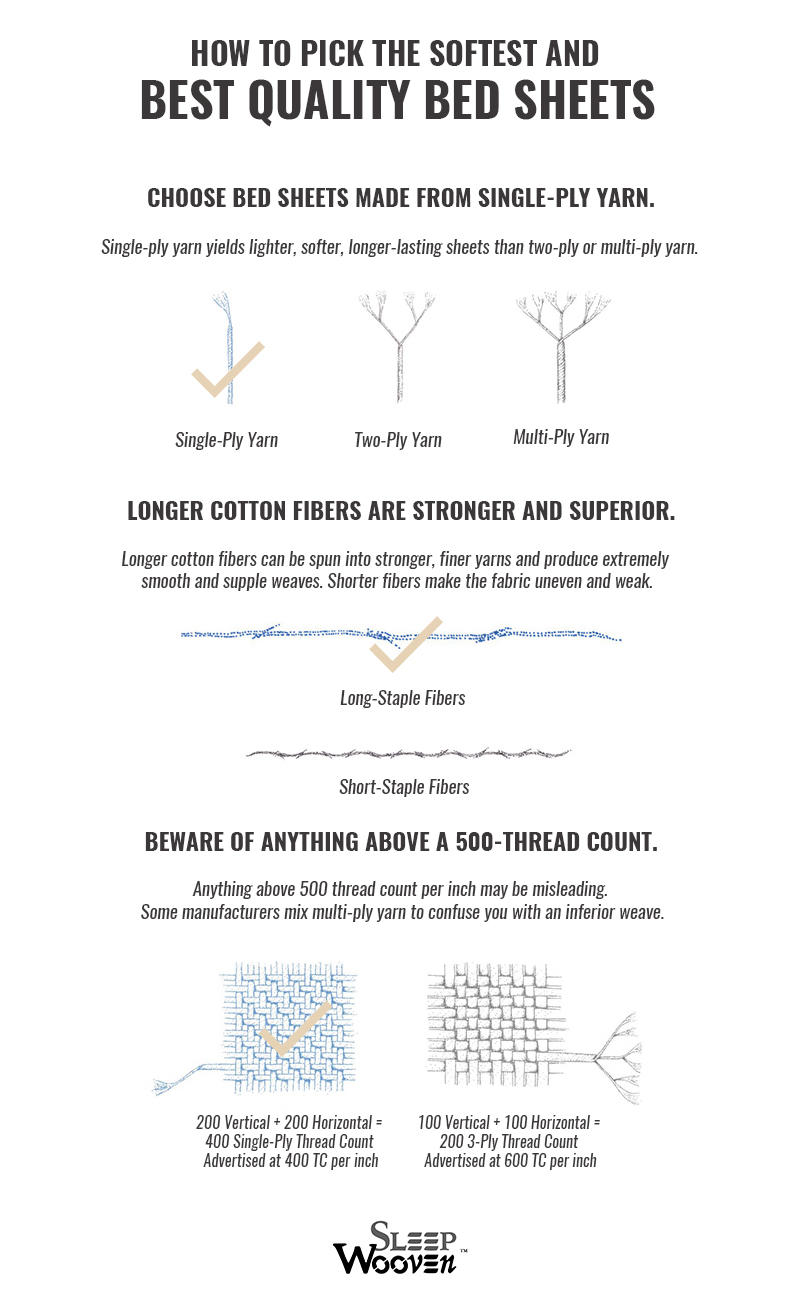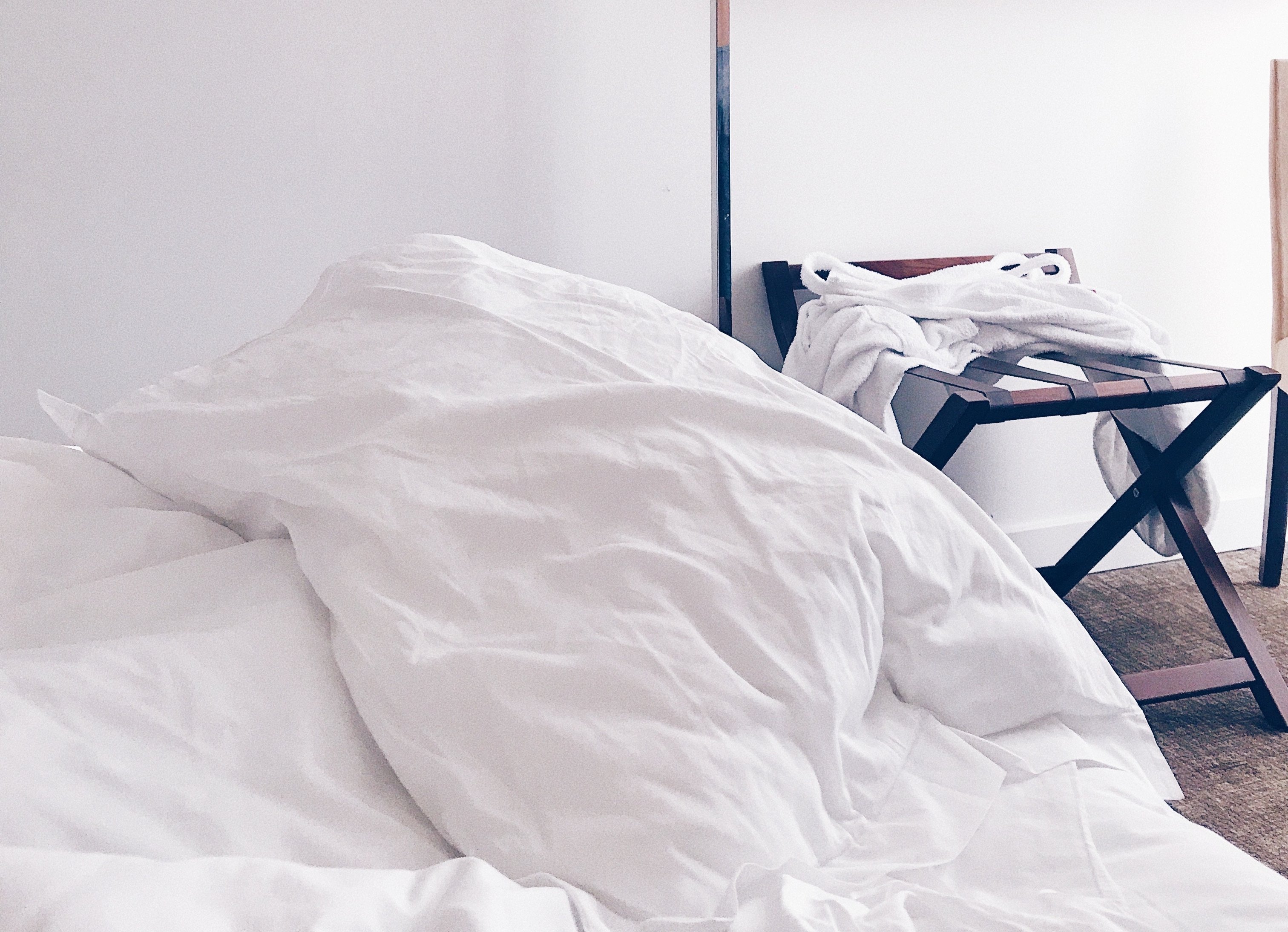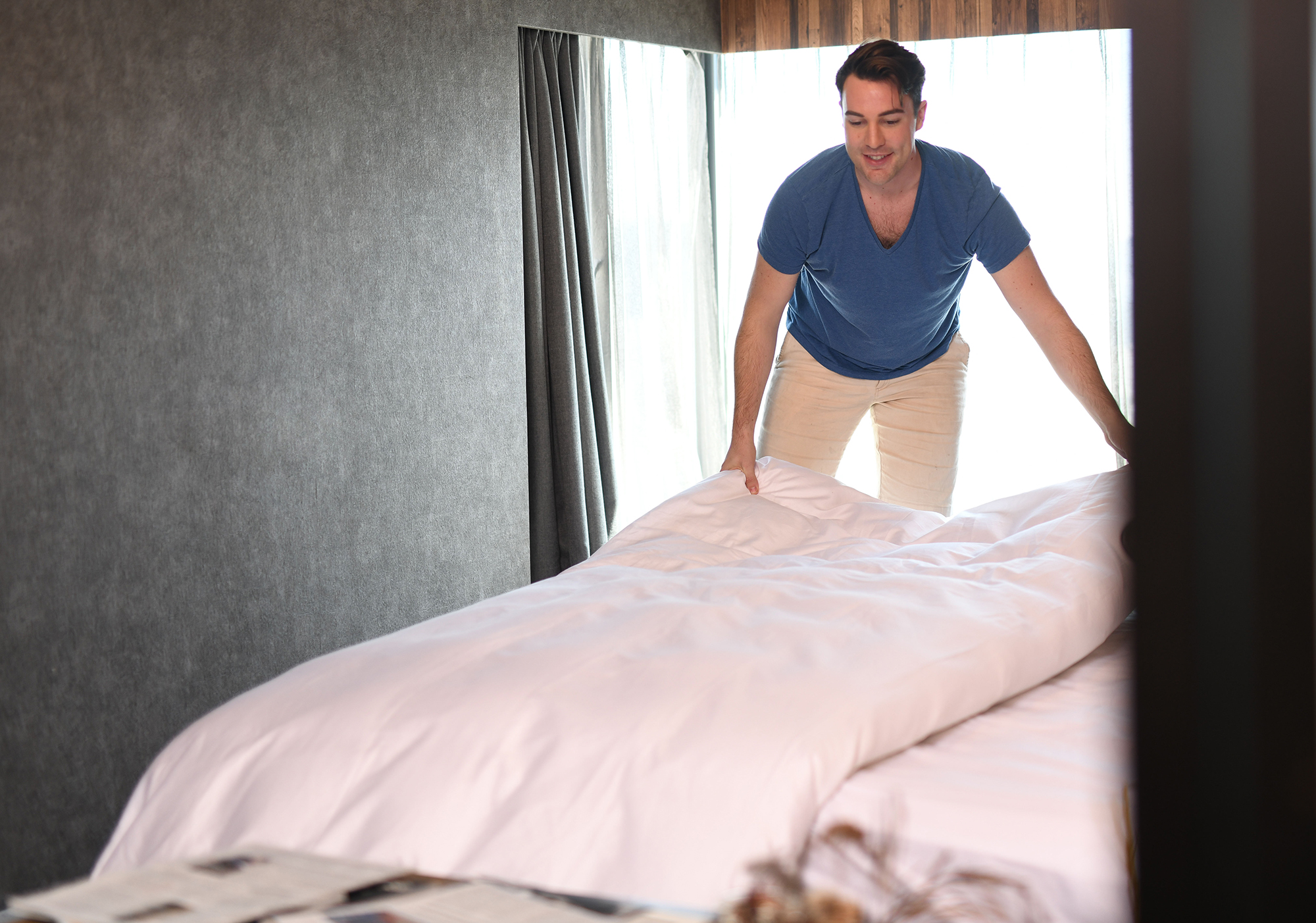The Truth about Thread Count
5th Dec 2018
Apart from working, we spend no longer doing anything in a given day than sleeping, so making your sleep environment the most welcoming and comfortable makes sense if you are to get the most out of it. There’s nothing better than returning to your sanctuary after a hard day and relaxing into your bed surrounded by peace, tranquillity and unsurpassed coziness that lulls you into a great night’s sleep. Choosing the right bed sheets, ones that will keep you cool, snuggle you in winter and feel like a second skin is an art but do you think you’ve got it right? Marketers have done a great job of getting us to believe that a high thread count is the ultimate measure of a quality sheet, and the higher the better, but what if we told you that might not actually be the case? Read on to find out the truth, the whole truth and nothing but the truth.
What is thread count?
Thread count is simply the total threads woven into a square inch of any given fabric. It is the total of the number of horizontal weaves (weft) multiplied by the number of vertical weaves (warp). Consumers are led to believe that the higher the number, the more weaves and therefore the higher the quality.
Is there a maximum thread count?

Logic suggests that there must be a maximum and after that, it is simply impossible to get a higher count. The maximum number of singly-ply threads that can be woven into any square inch of fabric is, according to professional weavers, 800-1000. Any more than this and the fabric would start to become stiff and uncomfortable.
So how can bedding boast a thread count of over 1000?

Think of it like doing a load of laundry - you can only fit so many items in a washing machine before it won’t operate properly. But what if you put only socks in the machine? You would now be able to wash more items but not necessarily the ones you wanted! It’s the same with thread count. By using multi-ply thread, multiple thinner threads that are twisted together to create a thread that now, according to manufacturers and industry standards, can double or even triple the weft and warp for calculation purposes, therefore increasing the thread count that they can print on their packaging hugely. Another way to boost thread count is to weave in additional individual threads called ‘picks’ which also help boost thread count calculations.
Does the type of cotton affect the thread count?
Yes and no! While high thread count has been shown to be a myth, all the hype about Egyptian cotton is actually true – it’s simply the best when it comes to bedding! And having a high-quality cotton, especially something as fine as a long-staple Egyptian cotton, will make a lower thread count feel more luxurious due to the weave and produce sheets that will last for years, feeling better and softer with each wash, without losing shape or pilling. Although a thread count of 200 is fine for cotton of this quality – producing a soft light sheet - a higher count of 400 gives that crisp 5* hotel-style feeling that many people crave. Make sure that your sheets are 100% Egyptian cotton though, otherwise you may end up with only a nominal number of threads of authentic origin.
How do I know which sheets to go for?

Look upon a quality bed sheet set as an investment that you will reap the rewards from for years to come. As long as you start with a sheet set that has the above qualities, the rest is now down to personal choice.
The best recommendation is to get touchy-feely! Open packaging, ask for samples, feel the material and have a lie down in it if you can! Some companies even offer a sleep trial so you can try their sheets in the comfort of your own bed and return them if you are not 100% happy.
Last but not least, especially online, remember that if it seems too good to be true it probably is.

